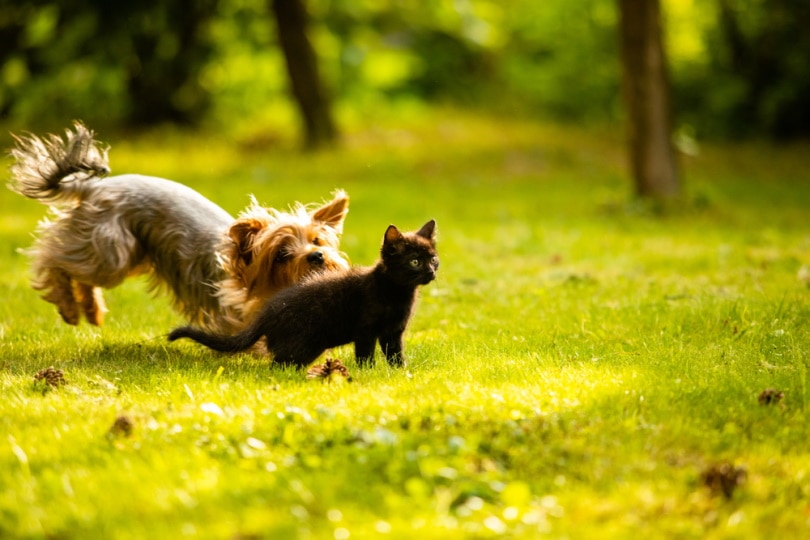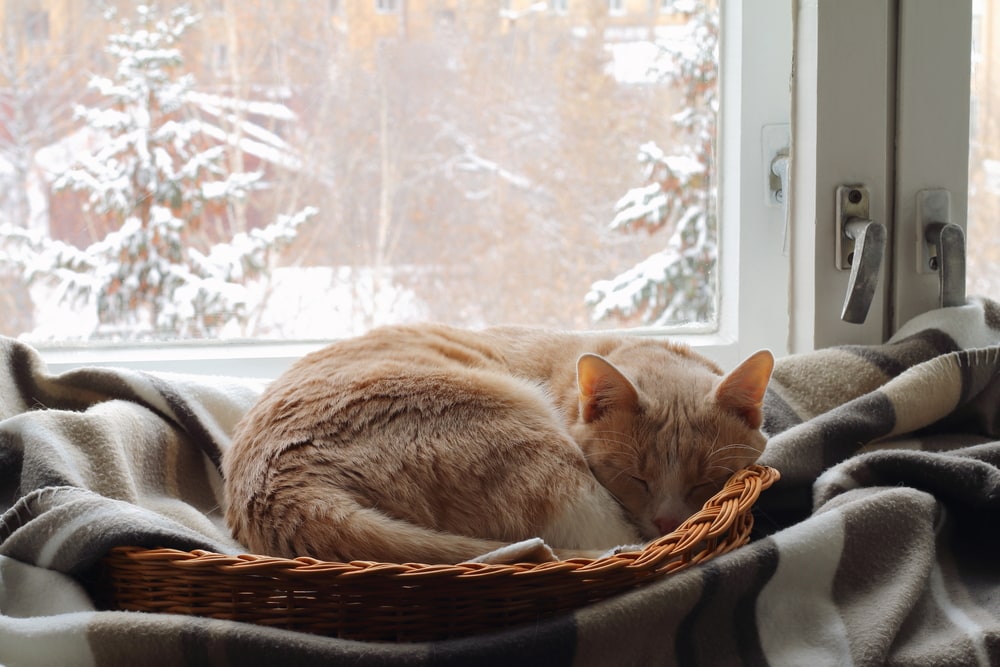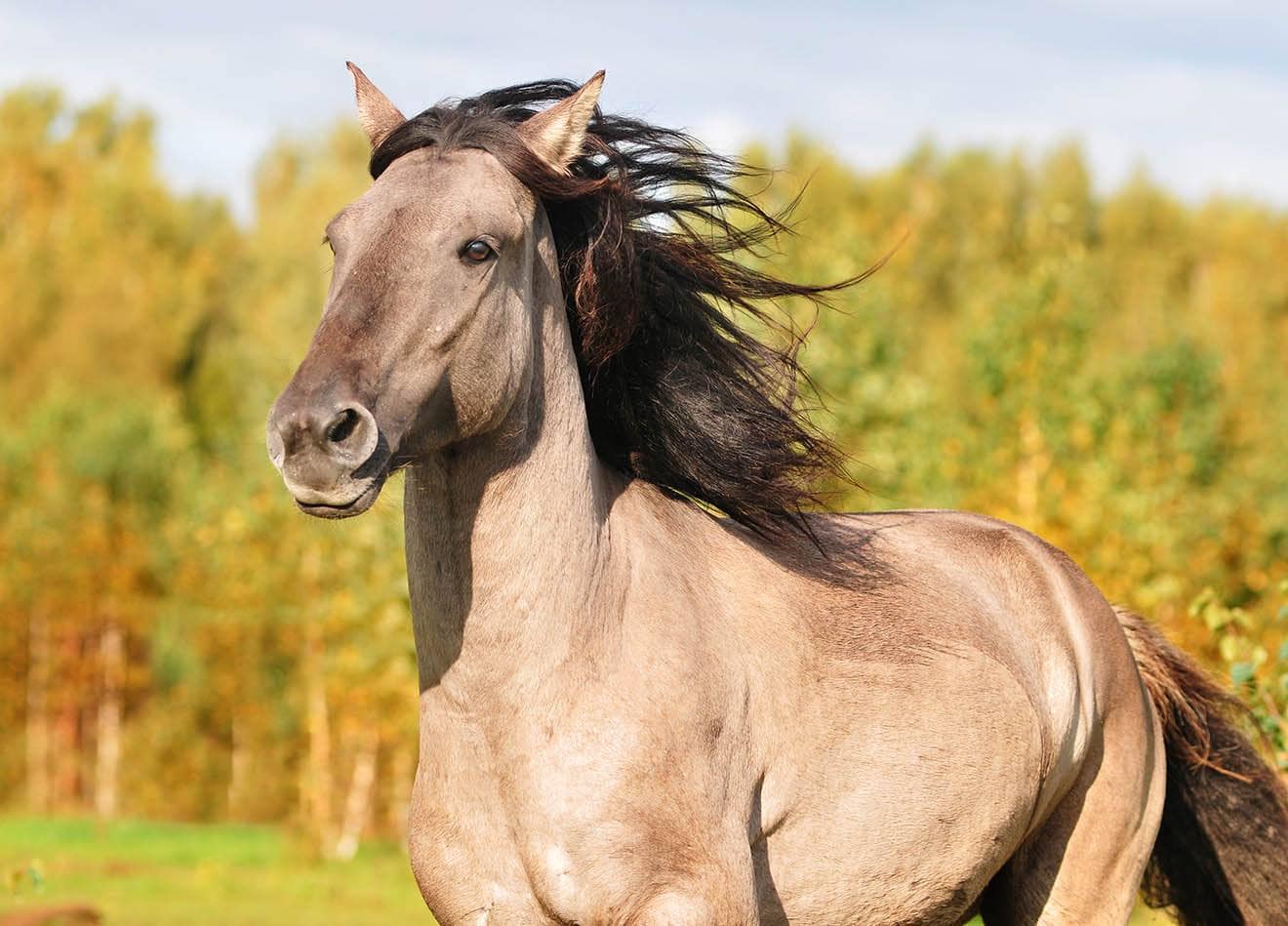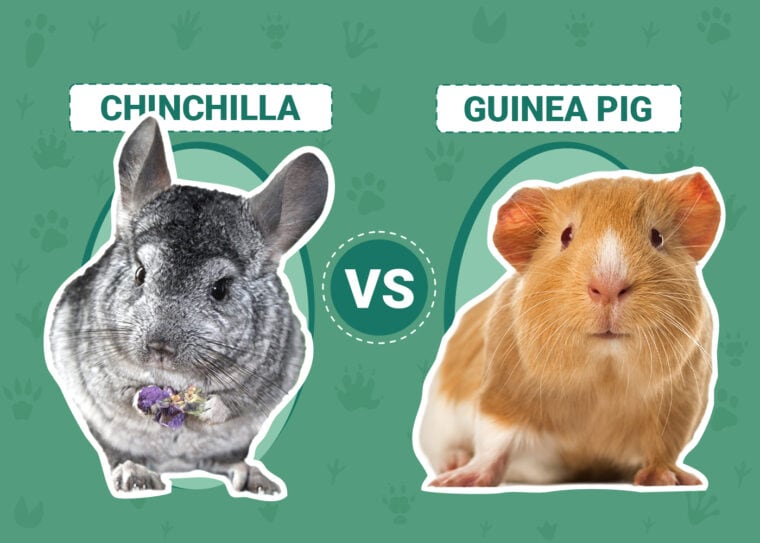
Click to Skip Ahead
Both Chinchillas and Guinea Pigs are popular “pocket pets” among households of all kinds throughout the United States. They both have their own unique traits that are worth the consideration of potential pet owners. Comparing Chinchillas to Guinea Pigs is kind of like comparing apples to oranges. They are both rodents, but otherwise, they do not have much in common.
But there are a few things that we can compare, like sleeping and eating habits, habitat requirements, grooming needs, and overall temperament, to get a clear idea of what it would be like to own either a Chinchilla and a Guinea Pig. After that, it should be easy for you to decide which pet option is right for your family.
Visual Differences

Guinea Pigs are larger than Chinchillas, which is the most noticeable visual difference between the two. Also, Chinchillas have tails and Guinea Pigs do not. Both animals can come in a variety of colors, including black, brown, beige, and white.
Chinchillas have much thicker coats of fur than Guinea Pigs do, to protect them from the elements and pests like fleas and lice. A Guinea Pig’s hair is typically longer than that of a Chinchilla. Also, the Guinea Pig’s eyes are larger and rounder than a Chinchilla’s.
At a Glance
Chinchilla Overview
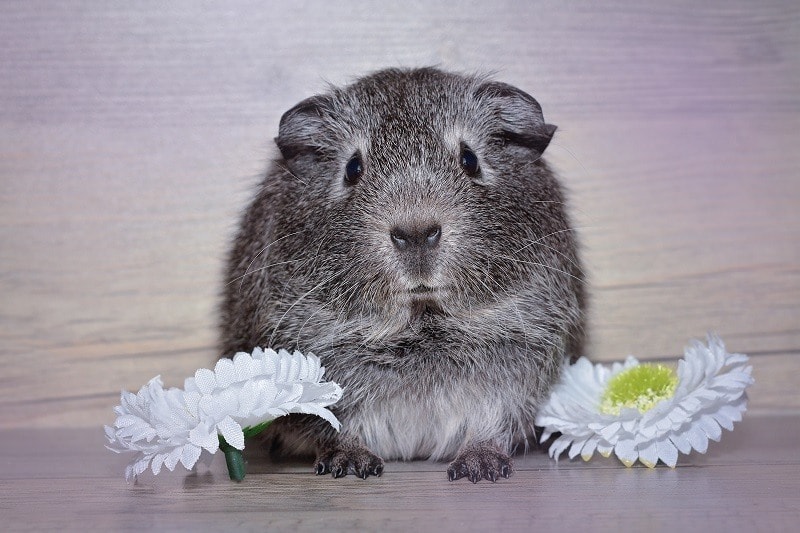
Chinchillas sleep during the day and generally spend the time at night awake, but they are most active during dusk and dawn. Therefore, they need a quiet place to live during the day. These creatures should not be allowed to scurry around the house because they can easily be stepped on or injured by furniture or other objects that they come into contact with.
They also like to try and eat everything that they can, so they could ingest something harmful if they are not contained. Chinchillas are happy to live alone, but they can get along well with one or two others if they are littermates or introduced while babies. Mates should be the same sex, though, or owners may end up with babies to care for before long.
Personality / Character
The rodents are playful and curious when they are awake. However, they tend to stay to themselves rather than seek out attention from humans. If handled from a young age, they do enjoy being held and petted occasionally. They are quiet animals, but they are never lazy or lethargic during their awake hours.
These are frisky little animals, so they need a large, contained habitat to spend their time in that will allow them to run, jump, climb, and play with their toys. They can get along with other small animals but should never be let out to play with larger pets like dogs or cats, even if they are affectionate, because they could accidentally get hurt.
Training
Chinchillas can be trained to do basic things that can make them more enjoyable to spend time with and ensure good behavior. Chinchillas can be taught to come when called, use a litter box so their habitat stays clean longer, and stop unwanted behavior. Before training starts, the Chinchilla should completely trust their trainer. Treats are the most important tool needed to train a Chinchilla, followed by patience. It can take days or even weeks to train one of these rodents to do something.

Health & Care
Chinchillas are generally healthy animals and do not succumb to serious health issues easily if they are properly cared for. However, there are minor issues that they could develop, such as eye infections, heatstroke, and mites. These animals have thick hair to keep them warm in cold weather, but the hair can make them overheat, so they should live in a cool area of the home where the temperature can be controlled.
The Chinchilla’s habitat should be fully enclosed for their protection and large enough that they can explore multiple different areas throughout the night while they are awake. Their habitat, food and water dishes, bedding, and toys should be cleaned once a week to keep them healthy as they age. A bowl of dust should be provided to Chinchillas twice a week so they can stay clean.
Chinchillas should never be bathed in or exposed to bodies of water, and there is no need to trim their nails or clean their teeth. These rodents eat commercial food, typically in the form of pellets. They can eat fruits and veggies, like shredded carrots and papaya chunks, as occasional snacks. These rodents should always have access to clean, fresh water.
Suitability
The Chinchilla is a suitable pet for families with or without children. They should not be expected to live side by side with other animals unless they are littermates of the same species. They should live in mild climates that do not get too hot or be housed in a temperature-controlled space that will keep them from overheating.
Guinea Pig Overview

Guinea Pigs are popular family pets because they are friendly and affectionate, they maintain daytime waking hours, and they rarely bite unless under distress. They have unique personalities and can get along with other friendly animals. Guinea Pigs are generally easy to take care of, and they do not need long outdoor walks like dogs.
They also do not talk much, like many cats like to do. They prefer sticking to a regular schedule and knowing when to expect their meals. They can be cuddly and cute, but they can also be goofballs that will keep you laughing all afternoon. These large yet adorable rodents can be purchased at pet stores everywhere, making them easy to acquire.
Personality / Character
Every Guinea Pig is unique and has their own quirks and personality traits, so owners never know exactly what they are going to get when adopting one of these pets. However, it is safe to say that Guinea Pigs are usually happy-go-lucky animals that enjoy the company of their human companions and other animals.
These rodents love to run and play, so they should be let out of their enclosed habitats daily for fun and exercise. Unless feeling threatened, Guinea Pigs are never aggressive. They can live alone in their habitat, but they prefer to have another Guinea Pig to spend their days with. These animals should be allowed to spend time outside of their habitat, either freely or in an exercise ball to indulge their curious nature and to keep them healthy and fit.
Training
Guinea Pigs are smart and enjoy learning to do new things, making training a cinch for both first-time and experienced owners. These rodents can learn how to come when they are called, turn around in circles, stand up and beg, and even jump through hoops. They can also learn how to head back to their caged habitat when told to. Like Chinchillas, Guinea Pigs train best when treats are involved. These animals love leafy greens as treats, which are affordable and healthy.

Health & Care
These rodents are a little tougher to care for than Chinchillas. They need baths once a month or so to keep them clean, and a shampoo made specifically for rodents should be used. Shampoos for humans will dry their skin and fur out. Their nails should also be trimmed regularly to minimize the risk of injury to themselves, others, and household belongings.
Guinea Pigs should eat a balanced diet consisting of grasses like alfalfa and an assortment of fresh fruits and vegetables. Many commercial food options are available that include the hay and grasses that these rodents need for good health. Guinea Pigs do not create their own vitamin C, so their commercial food should be fortified with that nutrient, and foods such as lettuce, kale, and parsley should be offered during mealtime regularly. Guinea Pigs can also eat broccoli, tomatoes, and bell peppers. Each full-grown rodent can have up to 1 cup of vegetables every day. They do not overeat, so there is no need to worry about serving size.
Suitability
This animal is a suitable pet for children, adults, and households with other pets. They are fun and easier to care for than other types of pets, like cats and dogs, and their interactive personality makes them great companions for children and teenagers.
Which Pet Is Right for You?
Both Chinchillas and Guinea Pigs can be great pets, but which one is right for your household? Chinchillas are easier to take care of and require much less attention than Guinea Pigs, so they may be best for busy households. Guinea Pigs require more care and attention, but they are also more interactive and affectionate, making them the perfect pet option for households that include children. We want to know which pet you think is the one that your family should adopt. Tell us in the comments section below!
Featured Image Credit: Top – webandi, Pixabay | Bottom – vantagepointfl, Pixabay


